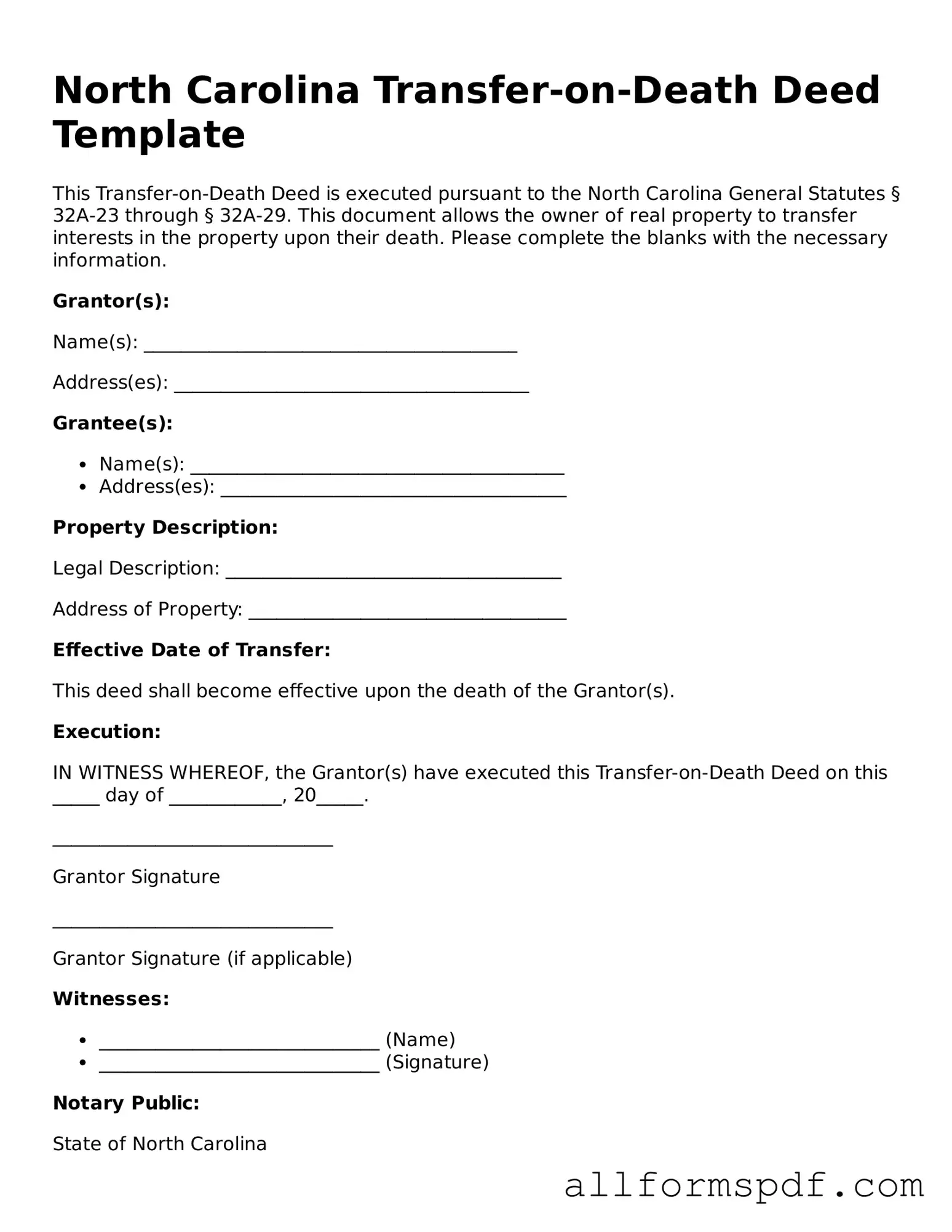Filling out a Transfer-on-Death Deed form in North Carolina can be a straightforward process, but many individuals make common mistakes that can lead to complications down the road. One of the most frequent errors is failing to include the full legal name of the property owner. It's essential to ensure that the name matches exactly with what is recorded in public records. Any discrepancies could cause significant delays or even invalidate the deed.
Another mistake often made is not clearly identifying the beneficiaries. It's crucial to provide the complete names and, if possible, the addresses of the individuals who will inherit the property. Omitting this information or using nicknames can lead to confusion and disputes among heirs.
Some people neglect to consider the implications of multiple beneficiaries. When designating more than one person, it's important to specify how the property will be divided. Will it be equal shares, or will one beneficiary receive a larger portion? Without clear instructions, misunderstandings can arise, leading to potential conflicts.
Inaccurate property descriptions are another common pitfall. The deed must include a precise legal description of the property, not just the address. A vague or incorrect description can result in the deed being challenged in court, causing unnecessary stress for all parties involved.
Many individuals also forget to sign the deed in the presence of a notary public. A signature without notarization can render the document invalid. The notary's role is to verify the identity of the signer and ensure that the signing is done willingly and without coercion.
People sometimes overlook the need to record the deed with the appropriate county register of deeds. Even if the deed is filled out correctly, failing to file it can mean that the transfer does not take effect. Recording the deed is a critical step that protects the interests of both the property owner and the beneficiaries.
Another frequent mistake is not keeping a copy of the completed deed. After the form is filled out and filed, it's wise to retain a copy for personal records. This ensures that all parties involved have access to the same information, preventing misunderstandings in the future.
Some individuals make the mistake of using outdated forms. Laws and regulations can change, and using an old version of the Transfer-on-Death Deed form may lead to issues. Always ensure that you are using the most current version available.
Finally, people often underestimate the importance of consulting with a legal professional. While it may seem straightforward, the nuances of property law can be complex. Seeking guidance can help avoid mistakes that could have lasting consequences for you and your loved ones.
